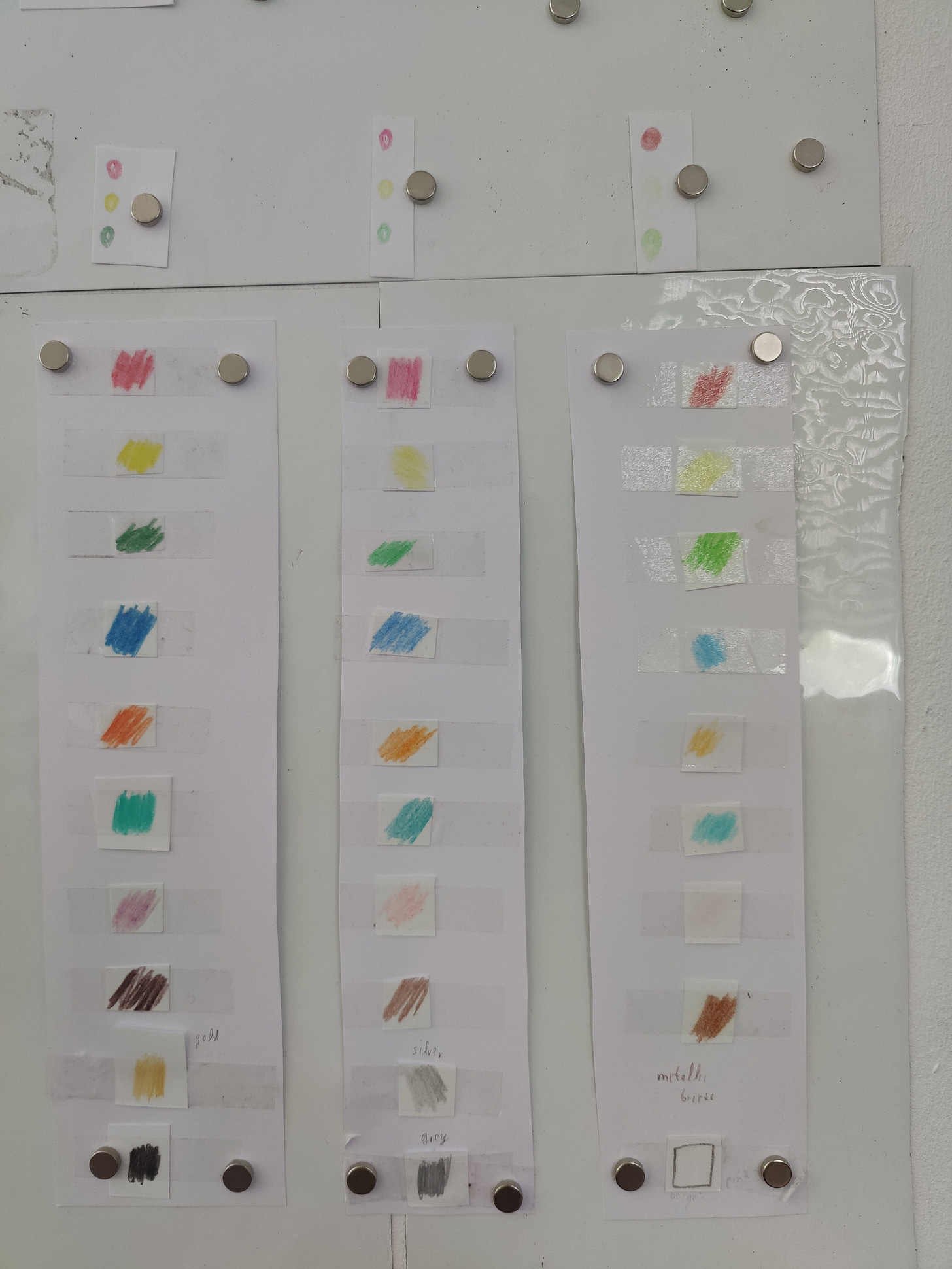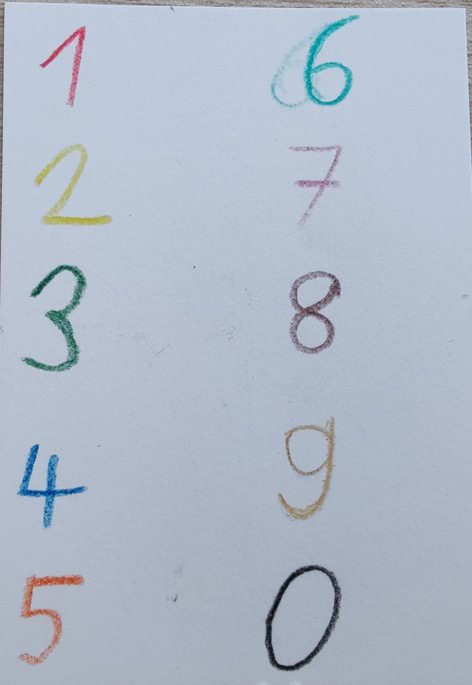30 Color Code
A refresher, wrote about this before, when it wasn't quite as grand.
Primary Color Names
1 Red
2 Yellow
3 Green
4 Blue
5 Orange
6 Cyan
7 Purple
8 Brown
9 Gold
0 Black
Secondary and Tertiary Versions
Then they follow a gradient from dark to light, wherever I could make that row.
Best exemplified by Green and Blue.
Sometimes, it’s more of a hue change. Or it’s something wild like the ninth color being all about metals, primary being gold, secondary being silver and tertiary being bronze.

Digital Colors
Working with a lot of pens is all fine and good, but I find it troublesome finding exact matches, when illustrating things digitally.
So for now, in the digital context, the primary colors are defined thus:
And the secondary and tertiary colors are not yet implemented.
Maybe I can sync them up one day, but I haven’t had the time.
Their Development
At first found it really difficult to even find ten sufficiently distinguishable colors. When I started out in 2017 or so, I was constantly confusing 4 blue and 6 cyan, because of visualization interference alone.
Got better over time, extended it to twenty and thirty last year.
Thirty is probably the limit for the foreseeable future.
Going higher, I’d need to spend probably hundreds on a sufficiently large colored pen set and still find some awkward gaps.
It’s a powerful Code, that experimenting with, designing and messing up, I’ve gotten a lot of fundamental insights from.
In many ways, it’s the foundational element of the Ambitious Cognition Project.
And I’ve yet to fully implement a tenth of the ideas and a smaller fraction of the performance, that I want out of it.
But the new “Base 1000 Square”-Tool I will soon introduce, will be showing of the power of using primary and tertiary color-coding in conjunction to do some really cool things.
Stay Tuned!



